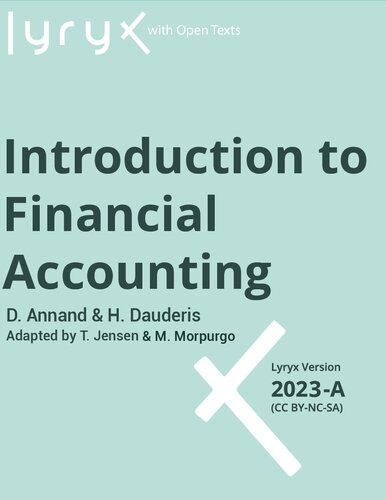

Most ebook files are in PDF format, so you can easily read them using various software such as Foxit Reader or directly on the Google Chrome browser.
Some ebook files are released by publishers in other formats such as .awz, .mobi, .epub, .fb2, etc. You may need to install specific software to read these formats on mobile/PC, such as Calibre.
Please read the tutorial at this link: https://ebookbell.com/faq
We offer FREE conversion to the popular formats you request; however, this may take some time. Therefore, right after payment, please email us, and we will try to provide the service as quickly as possible.
For some exceptional file formats or broken links (if any), please refrain from opening any disputes. Instead, email us first, and we will try to assist within a maximum of 6 hours.
EbookBell Team

5.0
28 reviewsThis text is intended for a first course in introductory financial accounting. It was updated to reflect current International Financial Reporting Standards (IFRS). For example, it reflects the recent change in IAS38, para. 98, allowing the use of multiple methods in amortizing intangible assets. It focuses on core Introductory Financial Accounting topics that match pre-requisite requirements for students advancing to Intermediate Financial Accounting. Excluded are advanced topics that are covered in Intermediate Financial Accounting, such as leases and bond amortization. The text takes a corporate approach (vs. beginning with a sole proprietorship emphasis and then converting to a corporate approach); this consistency throughout the book reduces confusion for the introductory student.
The book covers all essential topics: the accounting cycle, merchandising, assigning costs to inventory, cash and receivables, property, plant and equipment, debt financing, equity financing, statement of cash flows, financial statement analysis, and proprietorships and partnerships.
Additionally, this version of the open text is supported by Lyryx Learning, offering at an affordable price editorial services to develop and adapt the content, formative online assessment, course supplements, and daily support to both the students and instructors.